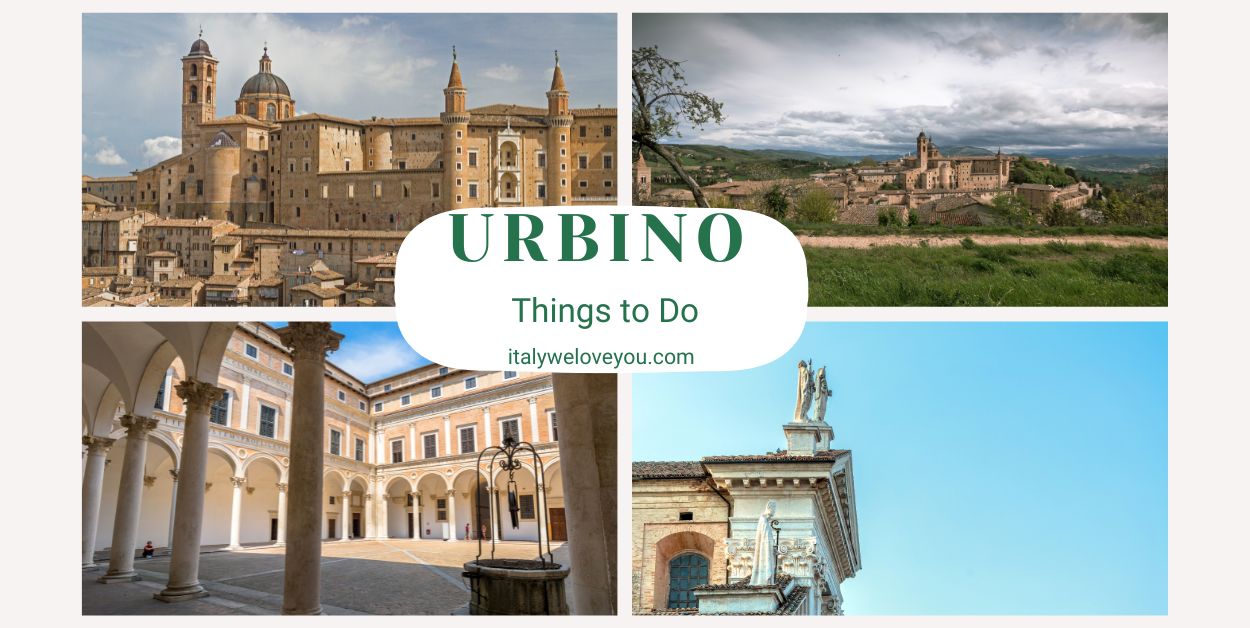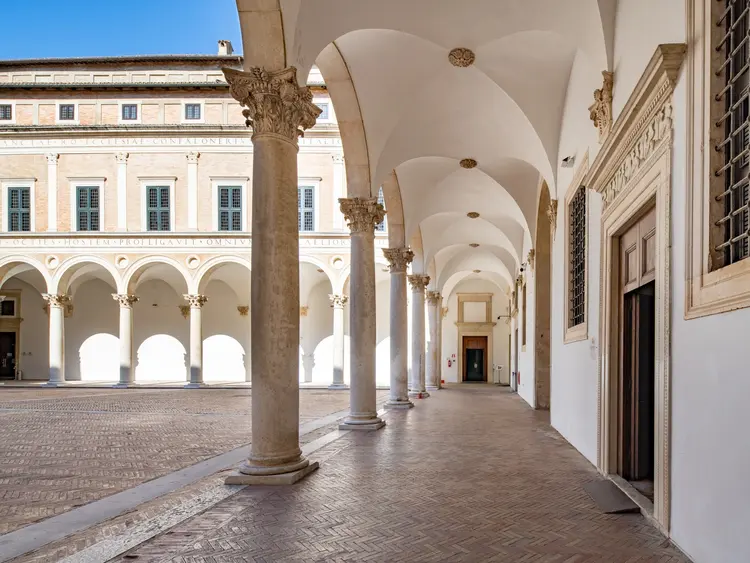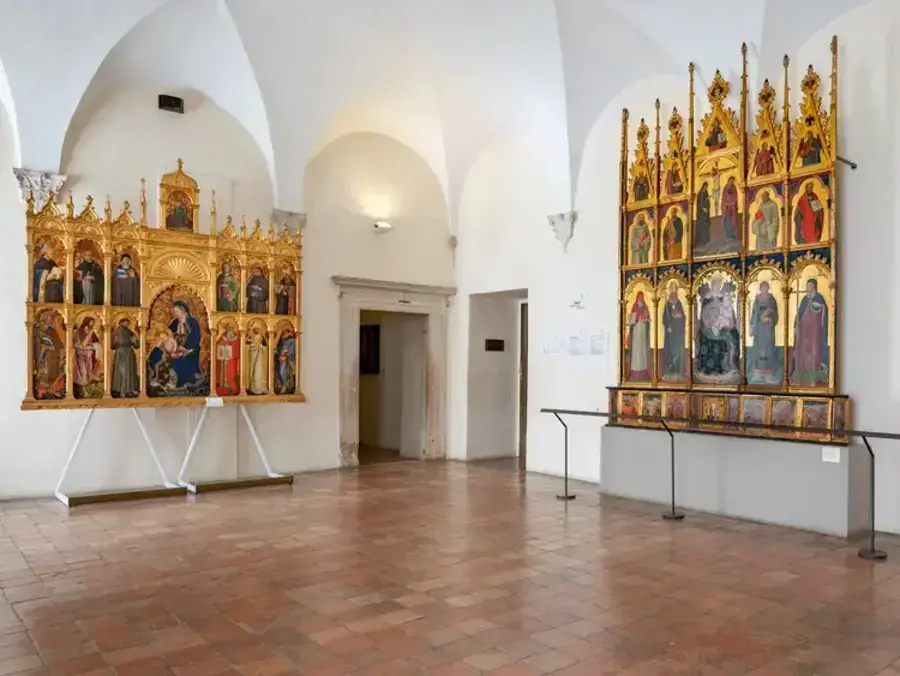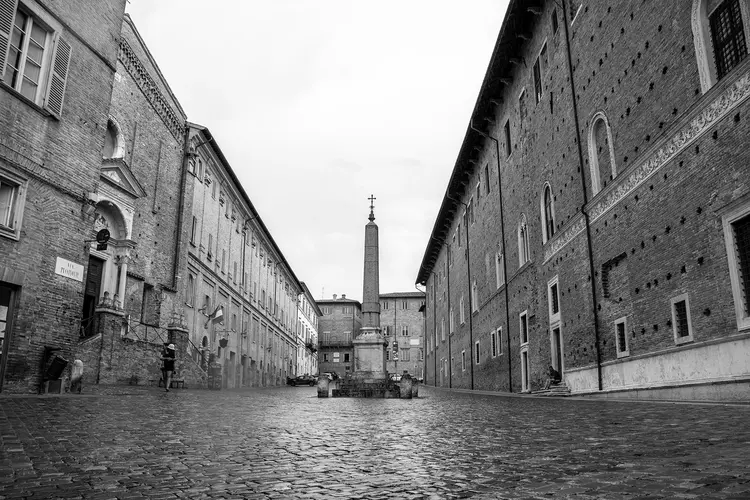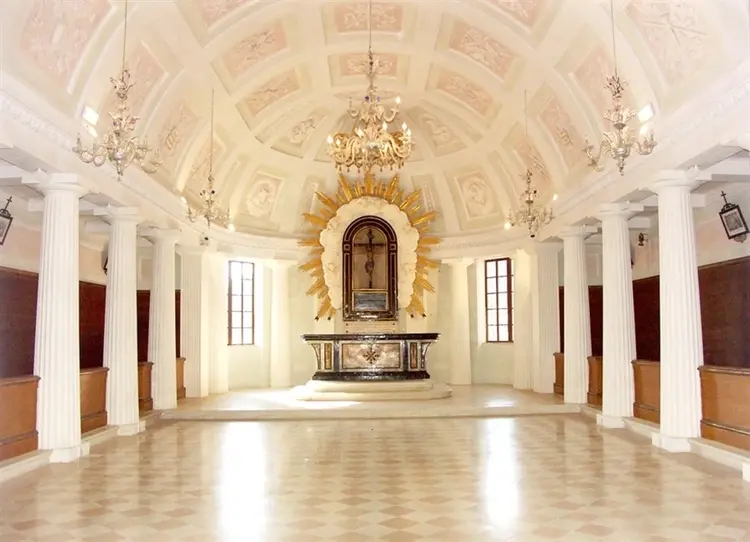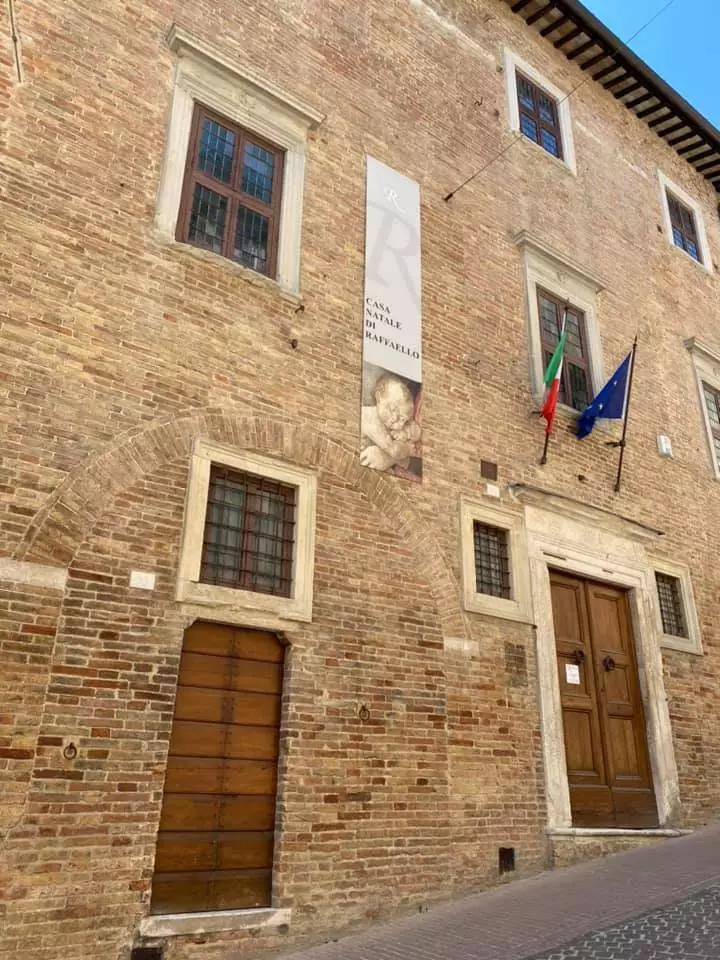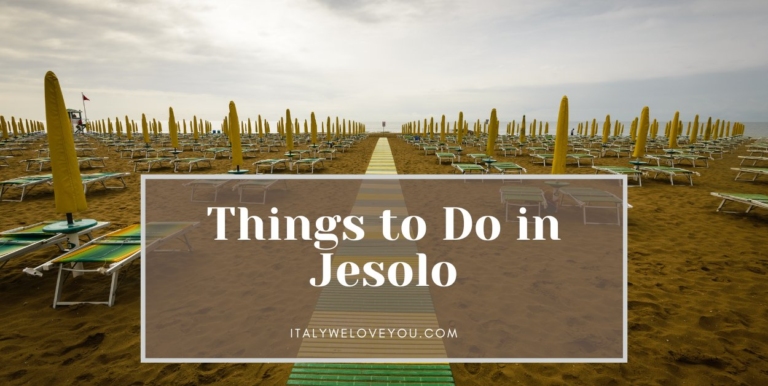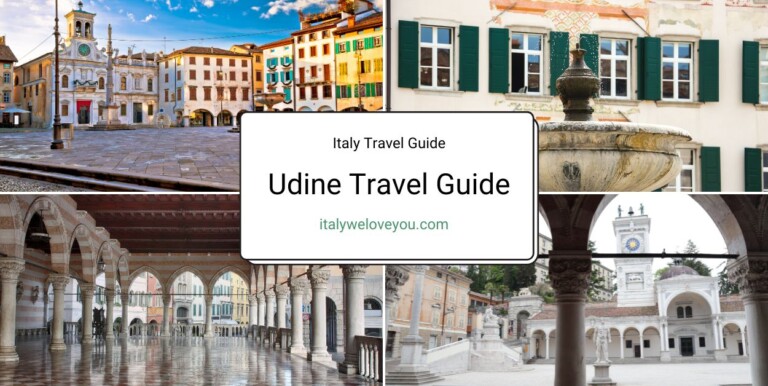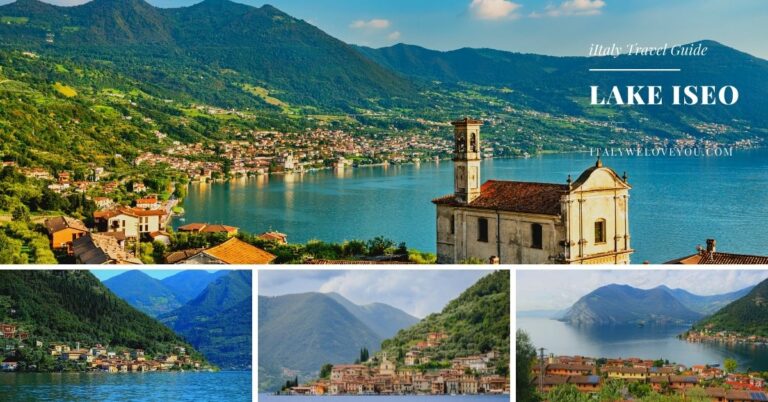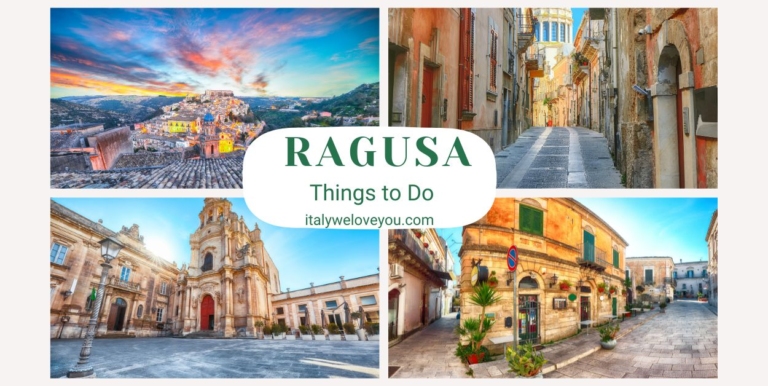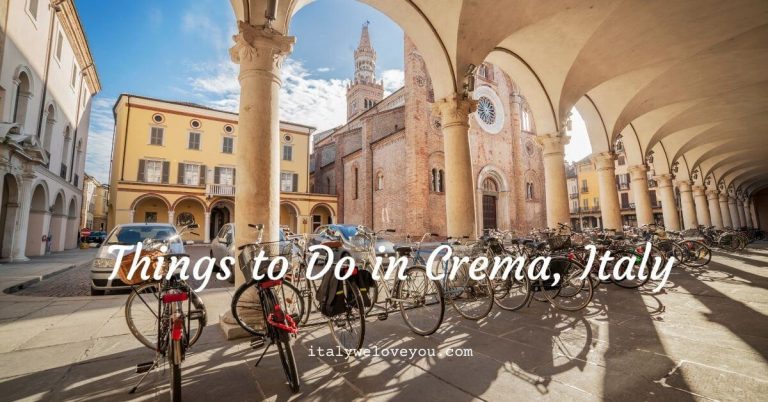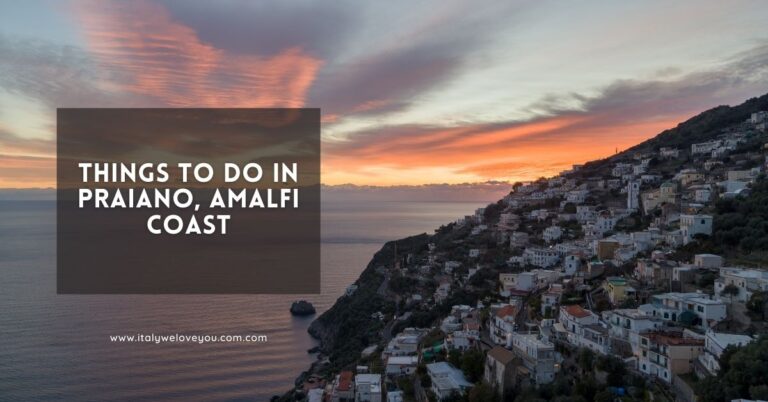12 Best Things to Do in Urbino, Italy
Urbino is a treasure trove of art and history, one of those cities that never ceases to surprise thanks to the richness of its historical, artistic, and architectural testimonies. Although its origins date back to Roman times, the city reached its peak in the 15th century, when Duke Federico da Montefeltro wanted to make it an ideal Renaissance city. Today Urbino is a UNESCO World Heritage Site.
Things to do in Urbino
Ducal Palace
The most important building in Urbino is certainly the Ducal Palace, which is much more than a simple “palace”. It is in fact a small fortified town built by Federico da Montefeltro starting from 1444. Several architects have been involved in the construction of this building for more than 30 years, including Maso di Bartolomeo, Luciano Laurana and Francesco di Giorgio Martini. Federico wanted to create a palace that was one of the most beautiful residences in Italy, transforming Urbino into an “ideal city”, a meeting place and home for the artists who would give prestige to the city and its court. Federico da Montefeltro was in fact a real Renaissance man, who loved to combine culture with the arms and political skill. Federico had the so-called bastion of the helical ramp built in the city walls, an engineering masterpiece that houses the large helical staircase that connected the Ducal Stables to the Ducal Palace, allowing the Duke to arrive at the stables directly from the Palace. In the 19th century, the Raffaello Sanzio Theater, the main theater of Urbino, was superimposed on the bastion, whose atrium is decorated with two marble busts depicting one Raphael (to whom the theater is dedicated) and the other Donato Bramante. The theater was renovated in the 1970s, especially in the interior, and the stairs that once formed the spiral ramp are now a way to reach the historic center.
National Gallery of the Marche
Today the Ducal Palace houses the Marche National Gallery, one of the most important collections of Renaissance paintings in Italy, where you can admire works of art by Raphael, Titian and Piero della Francesca. The Gallery consists of about 80 rooms and contains works from 1300 to 1600, mostly paintings but also furniture, sculptures, tapestries and drawings. The main works are located on the first floor, divided between the apartments inhabited by the Duke and his family. The Flagellation of Christ and the Madonna of Senigallia, by Piero della Francesca, are in the Duke’s apartment: thay are two masterpieces of Italian history of art. As well as the painting with the famous perspective “Ideal City” by an unknown author. The journey among the masterpieces then continues with the “Portrait of a Gentlewoman” and the “Saint Catherine of Alexandria”, both by Raphael and two canvases by Titian. Other works of art from the sixteenth and seventeenth centuries by Barocci, Gentileschi, Guerrieri are on the second floor there. In the collections of the Marche National Gallery not only find space the undisputed masterpieces of the Italian Renaissance but also the two Volponi collections, donated to the museum in 1991 and 2003 by the Volponi family of Urbino. The museum layout follows a dual purpose: on the one hand to enhance the Renaissance spaces with contemporary works of art from the history of the Palace, on the other hand, to present the masterpieces that come largely from the Marche region, documenting the regional art. Since 2019, 140 paintings and 155 ceramics from the collection of the Bank of Pesaro Foundation have been permanently exhibited in the same exhibition spaces as the Gallery. The Foundation’s art collection offers a precious testimony of the history of the art in the area. In it, in addition to the graphic, cartographic and sculptural works, the fourteenth-fifteenth-century group of ceramics takes on particular importance, also with the presence of important painters such as Pietro Novelli.
Piazza del Rinascimento
Leaving the Palace, you will find yourself in Piazza del Rinascimento, a beautiful square with its Egyptian obelisk and the Gothic-style church of San Domenico. To the left of the square, you can admire the Cathedral dedicated to Santa Maria Assunta, in a neo-classical style.
Urbino Cathedral
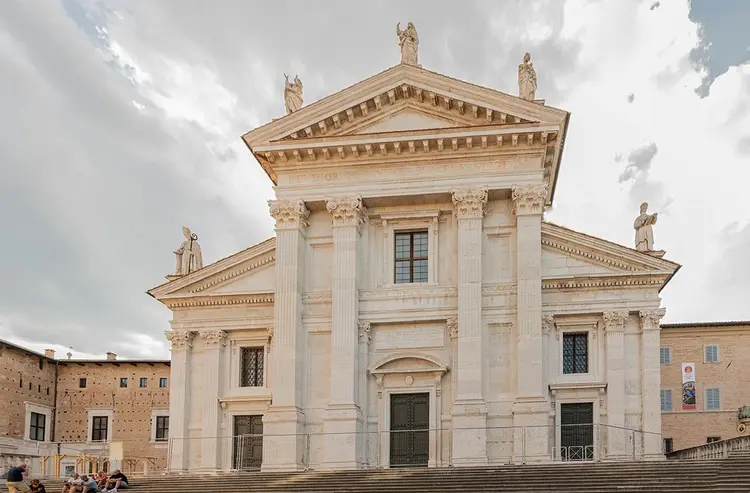
The Cathedral of Urbino was built in 1021 and then replaced by a new church designed by Francesco di Giorgi Martini, the architect of Federico da Montefeltro. After the earthquake of 1789, the Roman architect Giuseppe Valadier built the current cathedral in the neoclassical style. Inside there are two beautiful paintings by Federico Barocci: the Martyrdom of San Sebastian and the Last Supper. The most interesting part of the cathedral is the caves that over the centuries first hosted a Confraternity, while during the Second World War they housed the works of art of the Treasury of the Basilica of San Marco in Venice, to protect them from bombs and Germans.
Albani Diocesan Museum
Besides the Cathedral, you can visit also the attached Albani Diocesan Museum (in memory of the patronage of the noble family of Pope Clement XI, who contributed to increasing the “treasure of the cathedral”). In this museum, you will find varied ecclesiastical furnishings, from the thirteenth century to the present day like, for example, chalices and reliquaries, illuminated manuscripts, precious liturgical vestments. In the exhibition, divided into three rooms, there are also numerous frescoes that tell the spread of the Gothic style. There are also works of art from great schools such as that of Giovanni Santi and great artists such as Federico Barocci and Federico Zuccari. Finally, the Oratory of the Grotto, an integral part of the Albani Diocesan Museum, houses part of the collection.
Raphael’s House
But Urbino is also the birthplace of Raphaello Sanzio and therefore cannot absolutely miss a visit to his home, located in the artisan district, where the one who would become one of the greatest artists of the Renaissance was born on March 28, 1483. The house retains only a few original works by the great painter, almost all painted at a young age, but still worth a visit because it is here that Raphael spent his childhood training in the workshop of his father, an artist at the court of Federico da Montefeltro, starting with works commissioned to him by the nearby localities of the duchy. On the ground floor is the workshop of his father Giovanni Santi, now used for temporary exhibitions, while on the first floor there are copies of paintings by Raphael and tributes by other artists to the great painter from Urbino. In Raphael’s bedroom, there is a fresco depicting a “Madonna and Child” considered an early work made together with his father. Once out of the House of Raphael, continuing along the same uphill road, you will arrive at the monument dedicated to Raphael.
Oratory of St John the Baptist
Another place to visit is the Oratory of St. John (which takes its name from two frescoes depicting the life of St. John the Baptist), located in Via Raffaello 57. The building dates back to 1365 and originally served as a hospital for pilgrims, the sick and penitents. The church has a single nave and retains the original structure with a wooden ceiling, while the facade was restored in 1900. After passing the door of the neo-Gothic facade, the Oratory offers its visitors the view of a real masterpiece painted on the walls: this is the cycle of frescoes created by the brothers Lorenzo and Jacopo Salimbeni from San Severino in the 15th century and represents one of the most successful achievements of international Gothic in Italy. The entire wall of the apse is illustrated with scenes from the “Life of St. John the Baptist” and the “Crucifixion”. In the episode of Jesus’ death, the strong contrast between the drama of the main scene and the fragmentation of the story into many small episodes is highlighted. The represented crowd appears almost indifferent to attend the event. As for the Stories of St. John, frescoed on the right wall of the altar, the tone is less dramatic.
Oratory of St. Joseph
In the same street where the Oratory of St. John is located there is also the Oratory of St. Joseph. Worth a visit especially for the tuff and pumice stone nativity scene from 1560 made with human-sized sculptures, considered the oldest nativity scene in the world. It is kept inside a chapel entirely covered with tuff to recreate the environment of a cave as much as possible. In the Oratory you will find also valuable decorations and works of art from the eighteenth century, donations of various members of the Albani family. It is possible to buy a single ticket to visit both oratories.
Church of San Bernardino
Just two kilometers from the historic center, in the nature, is the Church of San Bernardino, also known as the Mausoleum of the Dukes: it was in fact built at the behest of Federico da Montefeltro to house his remains after his death. The architect who built it was Francesco di Giorgio Martini, between 1480 and 1490. The austere exterior of the church, in brick, contrasts with the bright and elegant interiors, characterized by a Latin cross plan and a single nave covered with a barrel vault. The frieze that runs along the entire internal perimeter of the building contains a praise to San Bernardino. The body of the Duke rests, together with that of his family, in the burial chamber below the floor. Today the church is devoid of important works of art but from its privileged position, on the hill of San Donato, the church offers a suggestive view over the city of Urbino.
Botanical Garden of the University
As in every Renaissance city, Urbino also has its own Botanical Garden, opened in 1809 as a scientific institution on the initiative of Professor Giovanni De Brignoli. The Botanical Garden includes an outdoor space of over 200 square meters spread over three levels, hosting numerous neoclassical-style greenhouses built-in 1813. In the greenhouses, you can admire 2.731 species and varieties of plants, potted or planted, of which 572 indigenous.
Albornoz Fortress
In addition to museums and palaces, the Albornoz Fortress is certainly worth a visit: it is a fortified building built on the highest point of Mount S. Sergio. Built during the second half of the fourteenth century, it has undergone various destructions and reconstructions: in the early sixteenth century the fortress was connected to the city walls, while in 1673 the fortress was sold to the Discalced Carmelite fathers of the nearby convent, now home to of the Academy of Fine Arts, to then resume its military functions in the Napoleonic era and be returned to the Carmelites in the following years. The current structure has a rectangular layout with two semicircular towers and bastions and houses the Bella Gerit Museum, where you can admire archaeological finds and an entire room dedicated to the history of war equipment in use between 1300 and 1500. The particularly elevated position of the Fortress allows you to enjoy a panoramic view of Urbino and the surrounding landscape.
Urbino Foods
The visit of Urbino can be concluded by tasting some of the typical dishes of the area. As the city is halfway between the sea and the Apennine mountains, it is not surprising that mushrooms, truffles and game dishes are often found on the plate. Among the first courses we remember the “passatelli”. Another typical product is the “Crescia”, a kind of piadina that goes well with Montefeltro salami, Carpegna ham, Fossa pecorino cheese and, above all, with “Casciotta”, a cheese of ancient origins. Among the second courses, beef triumphs, especially the local Marchigiana breed, which provides extraordinary steaks.
How to get to Urbino
Urbino can be reached by car or bus from Pesaro. This city is located in the rolling hills of Marche and can be reached along the winding roads of the countryside. Urbino is also home to an important university founded in 1506, as well as being a renowned center for ceramics, art and the majolica tradition.

